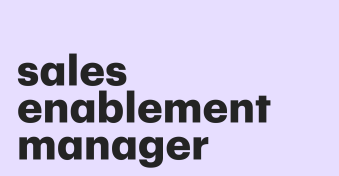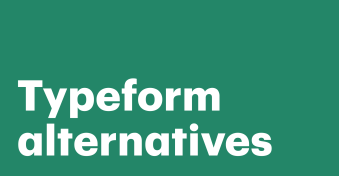Remote work is getting more popular day by day, and more owners of small and middle-sized businesses, eventually think of creating a remote team or hiring an offshore development team.
It is much easier now to collaborate remotely than it used to be before. Until recently, only the collaborators from different countries used to work remotely.
Now, in pandemic times, the teams that used to work in the same office together are being isolated in their homes to work remotely.
Of course, COVID-19 influenced a lot the development of such tools. And as the demand for remote teams increases, task managers and other efficient remote collaboration tools are increasing.
That is why we created a guide with tools and tips for onboarding a remote employee or even a team.
Follow our step-by-step guide to learn about the tools and how to use them effectively, and the features that might help you accommodate a freshman to the working environment of your company.
Step 1: Signing a contract
When the stage of choosing an appropriate specialist is done, it is time to sign a contract. But how to do it remotely? – you may ask. There is no need to print a contract to sign it, or waste tons of paper.
Today there are a bunch of efficient and time-saving tools for signing contracts.
For example, PandaDoc, is an online signature and document management tool that also provides a service for signing contracts. All you need is a stable internet connection and a contract to sign!
After signing a contract you will have to meet your new remote team. With the help of specialized tools, you will do it easily. Maybe, even save you time (compared to a live meeting).
Step 2: Meeting your remote team
Communication is the key, and we all know that. Communicating effectively with your team it is not enough just to be a good leader.
When introducing yourself to your new remote team members, you not only need to be both a good communicator but also have a great tool for communication.
Zoom is a great tool for video meetings. You can create both head-to-head meetings and conference calls with all of your team members.
After having a video chat, you may think of organizing a virtual workspace for your team members. Slack can help you with that.
You can also introduce a freshman to your team in the all-company chat introduction or add a person to different work-related chats and fun groups.
The user-friendly interface of Slack helps to understand the project better than anything.
The workspace of Slack is designed for the teams of creators who appreciate kanban. The tasks are easy to change and hard to lose track of their progress.
When communication tools are finally established, you will need someone to guide a new member of your team – a mentor.
Step 3: Choosing a mentor
It is always the most difficult part – working with people. Because the happiness and progress of the whole company depend on the satisfaction of the team members.
They should be satisfied not only with the compensation you pay them and the social benefits they get when working with you. More than everything they should respect their mentor and see his support.
How to choose the mentor who will suit your team? There is no universal answer, but there are some tips on how to make the most accurate choice from all the existing ones. There are features, which will help you with that:
- Values. Find the person who shares the values of the company and the other team members and it will ease your tasks.
- Communication. This is one of the most important among all soft skills. Make sure your future mentor feels and gets what the team says.
- Willingness. A mentor with this feature should be willing to help and lead, but not to oppress in any way.
- Expectations. Define clearly what the team is expecting from a mentor and vice versa. If not, it is not going to work.
Some of the features mentioned above will help you to find a good mentor for your remote team of collaborators.
Step 4. Setting up the tools for a remote employee
Now, when the contract is signed, the mentor is found and the team has finally got acquainted, it is time to set up a tool kit.
It is an important step if an employee will be comfortable working for your company or not. And on this happiness and satisfaction depends the growth of your company, as we said before.
What kind of tools do a remote employee needs? The ones to work effectively, of course! Every kind of employee will have its own set of tools.
Designers will need graphic editors, content creators – a comfortable ecosystem so on and so forth.
But every kind of team member will need management tools as well, such as calendar, e-mail (corporate), and insider’s product accesses.
It is important to remember not just to install these tools, but also to give logins and passwords. Otherwise, it will be all for nothing.
Step 5. Provide an access to wiki
The environment is just as important as communication. A virtual environment is a tool or an ecosystem where your remote employee might spend hours of work.
So, it is very important that the wiki you use will give your new team member access to a comfortable and user-friendly space.
Notion might be a good choice for your remote team. It is a workspace for your team’ wikis, tasks, databases, and notes.
A very handy tool to work with: nice and native interface, and a good team of support will not remain indifferent towards your tasks.
Another proven tool, with a wiki function, is Confluence. It is a replicated wiki system for internal use. Designed for organizations from big to small businesses and teams to create a unified knowledge base.
Now with a wiki, you can create both an internal page for corporate use and a website page that will be comfortable for your contractors and freelancers.
That’s why your new remote employee might not bother about the workspace while using a wiki.
Step 6. Provide an access to a task tracker
When the environment is set and a freshman starts his working day tomorrow, time to think about the actual tasks and their tracking as well. Luckily, it is not hard now with the help of task trackers.
Trello is a suitable task tracker for small teams. If you have less than 50 people to onboard, use this tool to set tasks.
It is a convenient and time-saving way to sort out the details and start working on a project. If you are a fan of Kanban, Trello should be your choice!
The other nice instrument for task and project management is Monday. It is a Work OS environment where teams have everything to manage processes, projects, and day-to-day work.
Routine work activities will not be boring anymore with Monday: marketing managers, designers, and many more remote teams of creators prefer it not only for unlimited cloud storage and free trial period.
The task tracker is chosen and all you are left to do is to set onboarding tasks for a remote employee.
Start with a list of primary tasks:
- Create a list of documents that a freshman needs to read before the work;
- And the people the newcomer has to have a video meeting with: mentors, product managers, developers, etc.
- Learn the company basics values and MVP. PPTs, documents, landings, and any other units might help the newcomer get into the product.
The above tasks are the minimum that will help you to onboard properly any kind of remote employee from a designer to a developer.
Additional tools for effective onboarding of a remote employee
Onboarding a team might seem to be an easy task, but a competent onboarding of a team is more complicated than you may think.
When all the bureaucratic stages are passed and it’s time for an employee to learn the basics of your team’s work and for your company, you will be looking for a way to make it easy and fun.
You may use interactive boards, video courses, gamification, animated videos – anything that may cross your mind for these purposes.
When you finally decided to use interactive tools for your team’s onboarding, there are tools like AcademyOcean that lets you set up educational materials for new employees, and even offers quizzes in the end.
To make an educational part of a remote employee more smooth, AcademyOcean provides educational courses, quizzes, and gamification for an employee.
And a user-friendly interface of the courses that are taken by a freshman for a client. Your new hire will appreciate an educational way in your team.
Tips to a mentor of a remote employee
As an important part of a team and the company, the employee’s mentor also might need some tips on the effective onboarding of a newbie.
We prepared some pieces of advice on soft skills that might help a mentor to cope with the task of onboarding.
- Communicate more frequently with a newbie. A friendly and respectful tone of communication endears a new member of a team. Do not forget to communicate politely with the other members of the team as well. If you fake it, it might ruin trust to you as a leader.
- Give some space. Everyone, especially a newbie, needs to exhale and get his or her head straight. Give people space and time to work on their own, don’t be pushy.
- Build a trusted relationship. Trust and respect are everything for a mentor. To earn this, make a warm welcome to a new remote employee and answer even awkward questions. Long ago, you were a newbie as well, right?
- See a person in an employee. Value a person’s private life and space. Nobody likes to be treated like a machine, be patient, and consider the person’s interests.
Conclusions
Successful onboarding of a new remote team member is a tiring and demanding process from both sides.
Everyone who participates in the process wants it to be clear and precise because, during the time of onboarding, both sides learn whether they suit each other.
To make the process a pleasure, not torture, use the up-mentioned tips and tools of collaboration.
Eventually, they will help you understand each other and build strong and trustworthy relationships among all the team members.


